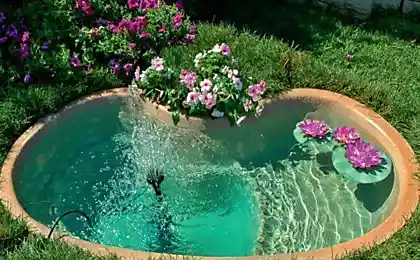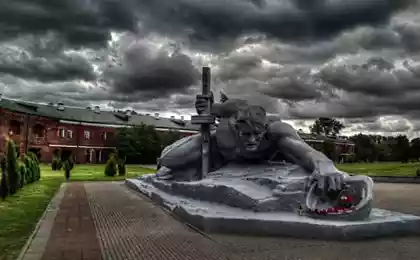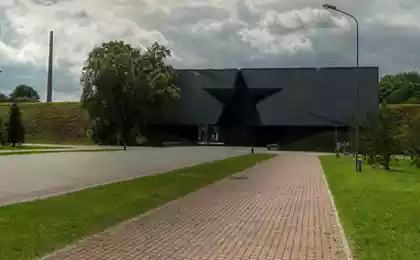616
Fountain "Friendship of peoples of the USSR"
One of the most popular symbols of Soviet Moscow fountain "Friendship of Peoples of the USSR", which was opened in 1954 at ENEA. This grandiose hydraulic structure in 1992, after the collapse of the USSR, was included in the list of monuments of history and culture of Federal significance in Russia. Art and engineering the value of the fountain is not in any doubt: here – and epic scope, and monumental idea, combining many sculptural elements into a coherent whole, and careful attention to all details, both aesthetic and technical point of view. The fountain project was created by project K. Topuridze and engineer V. Klavina. It was the work of five leading sculptors of the country.

The basic idea of the sculptural composition of the fountain is the embodiment of the ideals of friendship, unity and brotherly love among the peoples of the Soviet republics. In the fifties, when he created this fountain, the idea of unity of the fraternal republics was Central in the domestic policy of the USSR: behind was the hardships of creating a new big state, approval of the new system, the struggle for survival in the war against Nazi Germany. The country faced the task of rebuilding the economy after a terrible war, to strengthen his authority, keeping order within the state and in the socialist camp – without unity and the world was nothing. Therefore, it is logical that the Central symbol of ENEA portrayed this world, and even based on abundance and wealth.

Originally the fountain was supposed to be called "the Golden Sheaf", but before opening it was renamed. In the center of the sculpture really is a giant sheaf, and sunflowers (no need to laugh) cannabis. There are sixteen figures of girls in national costumes Soviet republics, who are holding various samples of agricultural products. You might ask why 16 because the Union republics were only 15? It's simple: until 1956 in the Soviet Union were also Karelian-Finnish Republic, it is "unnecessary" in this celebration of life.

The originality of the construction of the sculptural group is that of the girl-impersonation republics are absolutely not in the order in which the republics were represented on the emblem of the USSR. Therefore, VDNKH visitors could walk around the fountain and guess who is who. The special difficulty in this quest is already in 70 – 80s years gave just the same "extra" Karelian-Finnish lady, because of the existence of a Federal Republic by the time young people do not remember. At the Main pavilion watching three girls-Slav (clockwise – Belarusian, Russian, Ukrainian), followed by Uzbek, Georgian, Lithuanian, Latvian, Tajik, Turkmen, Finnish, Estonian, Armenian, Moldovan, Kyrgyz, Azerbaijani, and Kazakh. As you can see, a fully grouped on a geographical basis only Slavic Republic, the other "diluted" (note, for example, how "spread out" the Caucasus).

The surface area of the water surface of the fountain – about 4 thousand square meters, the volume of the bowl – 4000 cubic meters. It is the largest of the cascade of fountains OCE. In 2009 it was re-opened after an extensive renovation, updated utilities, established luxury lighting (per hour, it changes 16 times!), reinforced load-bearing structures.
Source: /users/155

The basic idea of the sculptural composition of the fountain is the embodiment of the ideals of friendship, unity and brotherly love among the peoples of the Soviet republics. In the fifties, when he created this fountain, the idea of unity of the fraternal republics was Central in the domestic policy of the USSR: behind was the hardships of creating a new big state, approval of the new system, the struggle for survival in the war against Nazi Germany. The country faced the task of rebuilding the economy after a terrible war, to strengthen his authority, keeping order within the state and in the socialist camp – without unity and the world was nothing. Therefore, it is logical that the Central symbol of ENEA portrayed this world, and even based on abundance and wealth.

Originally the fountain was supposed to be called "the Golden Sheaf", but before opening it was renamed. In the center of the sculpture really is a giant sheaf, and sunflowers (no need to laugh) cannabis. There are sixteen figures of girls in national costumes Soviet republics, who are holding various samples of agricultural products. You might ask why 16 because the Union republics were only 15? It's simple: until 1956 in the Soviet Union were also Karelian-Finnish Republic, it is "unnecessary" in this celebration of life.

The originality of the construction of the sculptural group is that of the girl-impersonation republics are absolutely not in the order in which the republics were represented on the emblem of the USSR. Therefore, VDNKH visitors could walk around the fountain and guess who is who. The special difficulty in this quest is already in 70 – 80s years gave just the same "extra" Karelian-Finnish lady, because of the existence of a Federal Republic by the time young people do not remember. At the Main pavilion watching three girls-Slav (clockwise – Belarusian, Russian, Ukrainian), followed by Uzbek, Georgian, Lithuanian, Latvian, Tajik, Turkmen, Finnish, Estonian, Armenian, Moldovan, Kyrgyz, Azerbaijani, and Kazakh. As you can see, a fully grouped on a geographical basis only Slavic Republic, the other "diluted" (note, for example, how "spread out" the Caucasus).

The surface area of the water surface of the fountain – about 4 thousand square meters, the volume of the bowl – 4000 cubic meters. It is the largest of the cascade of fountains OCE. In 2009 it was re-opened after an extensive renovation, updated utilities, established luxury lighting (per hour, it changes 16 times!), reinforced load-bearing structures.
Source: /users/155






















